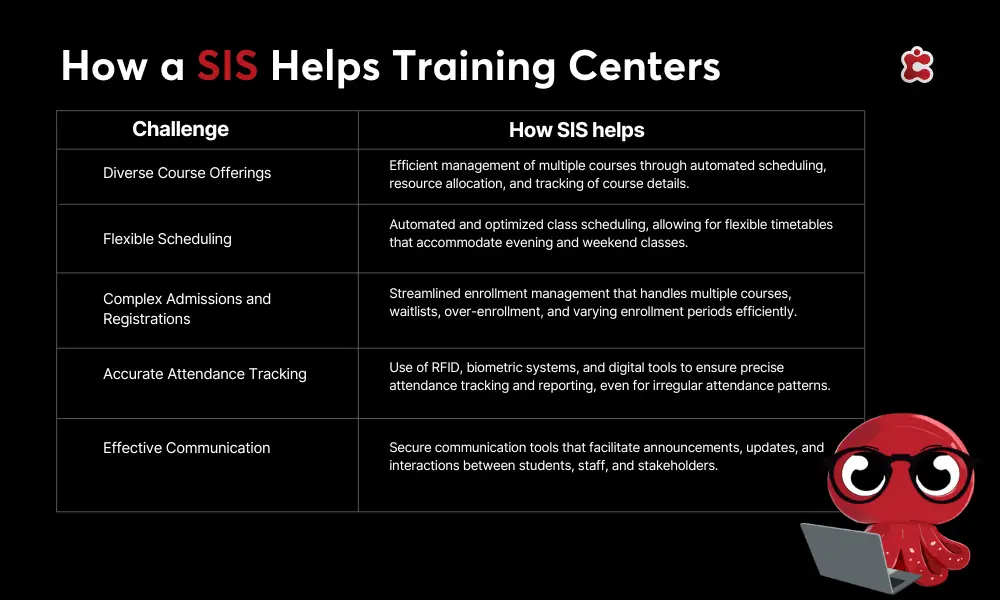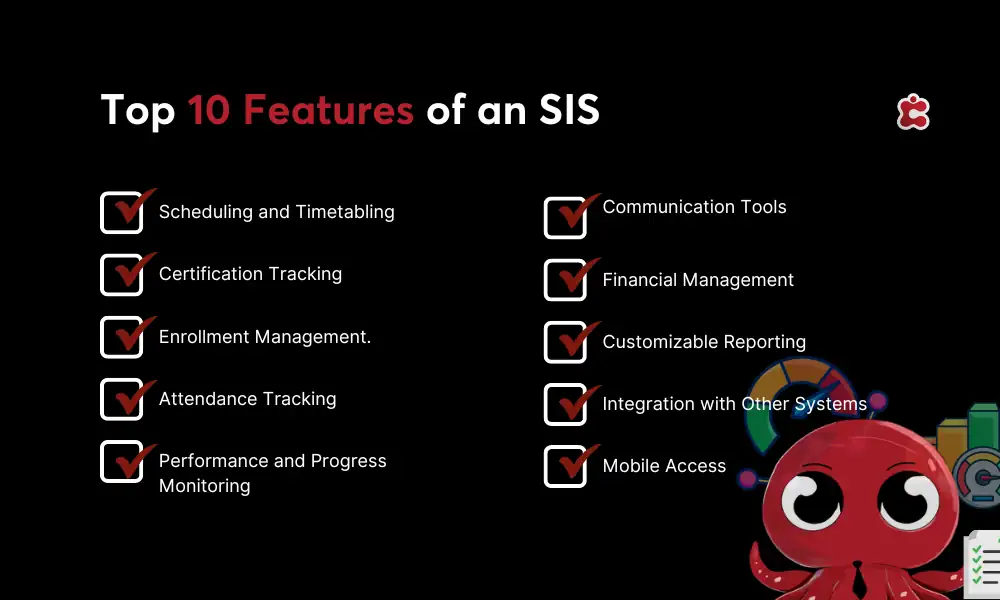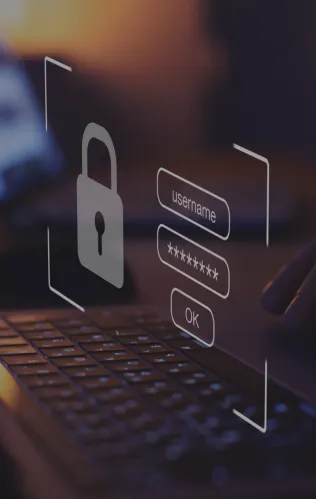With their specialized courses, flexible scheduling, and personalized attention, training centers are unique in the educational world. But with these unique offerings come unique challenges. And managing these dynamic environments efficiently can be tough. That’s where Student Information Systems (SIS) step in to save the day. These systems are essential for streamlining administrative tasks, enhancing communication, and boosting overall efficiency in training centers.
So, what exactly is an SIS? In simple terms, it’s a software platform that helps manage all the nitty-gritty details related to student data. Think of it as a one-stop shop for everything from enrollment and attendance tracking to performance monitoring and financial management. For training centers, this means less time spent on paperwork and more time focusing on delivering top-notch training.
What features should training centers look for in an SIS, and how will these benefit their institution?
Let’s explore.

Understanding Training Centers
A training center is an educational institution that focuses on providing specialized courses and skill development programs. They are tailored to meet the specific needs of various industries and learners. These centers offer a diverse range of training programs, from vocational and technical courses to professional development and certification programs. With such specialization, they face unique challenges:
- Training centers often provide various courses catering to different industries and skill levels. This diversity requires meticulous organization to ensure each course runs smoothly.
- Unlike traditional schools with set schedules, training centers must accommodate learners with varying schedules. This means offering courses at different times, including evenings and weekends, complicating scheduling and resource allocation.
- Handling the complexities of student admissions and registrations can be daunting. Especially when dealing with multiple courses and varying enrollment periods.
- Accurate attendance tracking is essential for monitoring student engagement and progress. This can be particularly challenging in training centers where students may attend irregularly or participate in flexible learning schedules.
- Effective communication between staff, students, and stakeholders is vital for the smooth operation of a training center. This includes everything from sending out course updates to handling student inquiries and coordinating with industry partners.
Given these challenges, training centers need a robust Student Information System to streamline and automate their administrative processes. An SIS can significantly alleviate the administrative burden by efficiently managing diverse course offerings and flexible scheduling. It ensures accurate and up-to-date enrollment, attendance, performance, and certification records. Effective communication tools within an SIS enhance connectivity between all parties involved, while financial management features simplify handling payments and billing.
Top Features of SIS for Training Centers
To meet the unique needs of training centers, a robust SIS should incorporate several essential features. Here’s a closer look at what these features are and why they matter:
1. Scheduling and Timetabling
Automated class scheduling and rescheduling are crucial for maintaining an organized timetable, especially in training centers where flexibility is key. Efficient management of classrooms, instructors, and equipment ensures that resources are optimally utilized. Additionally, syncing schedules with the personal calendars of students and instructors helps everyone stay on track and manage their time effectively.
2. Certification Tracking
Tracking student progress toward certifications and qualifications is vital for ensuring that students meet their educational goals. An effective SIS should notify students and instructors about upcoming certification renewals or deadlines. Moreover, issuing and storing digital certificates and badges makes it easy for students to access and share.
3. Enrollment Management
Simplifying the enrollment process for students is essential for reducing administrative burden and enhancing the student experience. An SIS should effectively handle over-enrollment and waitlists. This will ensure no seats are wasted and interested students are notified when spots open up. Providing detailed information about available courses and training programs helps students make informed decisions about their education.
4. Attendance Tracking
Using technology such as RFID or biometric systems to track attendance ensures accurate records and reduces manual tracking errors. Generating attendance reports for instructors and administrators helps monitor student engagement and identify attendance patterns, which is critical for maintaining high levels of participation.
5. Performance and Progress Monitoring
Facilitating quizzes, tests, and other assessments within the SIS helps evaluate student performance effectively. Detailed reports on student performance and progress allow for targeted interventions and personalized support. Additionally, allowing for instructor and peer feedback enhances the learning experience by promoting continuous improvement.
6. Communication Tools
Enabling secure communication between students, instructors, and administrators fosters a connected learning environment. Broadcasting important announcements to the entire training center or specific groups ensures that everyone stays informed about key updates. If applicable, allowing guardians to monitor student progress helps keep them involved and supportive of the student’s learning journey.
7. Financial Management
Managing student billing, invoicing, and payment processing efficiently reduces financial administrative burdens. Tracking and managing financial aid applications and disbursements ensures that eligible students receive the support they need, which is crucial for maintaining accessibility and equity.
8. Customizable Reporting
Data analytics capabilities within an SIS help leverage data to make informed decisions, supporting strategic planning and operational efficiency. Generating compliance reports ensures that the training center meets regulatory requirements, while custom reports tailored to specific needs provide valuable insights and support decision-making.
9. Integration with Other Systems
Integrating with Learning Management Systems (LMS), HR systems, and Customer Relationship Management (CRM) systems creates a cohesive and efficient operational environment. This seamless integration ensures synchronization of all relevant data, enhancing the overall user experience and operational transparency.
10. Mobile Access
Ensuring the SIS is accessible via smartphones and tablets provides flexibility and convenience for users on the go. Offering dedicated mobile applications enhances the user experience by providing easy access to key features and information anytime, anywhere.

Challenges and Considerations
While the benefits of implementing a Student Information System in training centers are substantial, several challenges and considerations must be addressed. One of the primary concerns is the implementation cost. Deploying an SIS often requires a significant upfront investment in software, hardware, and possibly infrastructure upgrades. Training staff to use the new system effectively is another critical consideration. Comprehensive training programs are necessary to ensure that all users, from administrators to instructors, can navigate and utilize the system’s features efficiently, minimizing disruptions to daily operations.
Training centers handle sensitive student information. This makes it imperative to select an SIS that adheres to stringent data protection regulations, such as GDPR or FERPA. This includes implementing robust cybersecurity measures to prevent data breaches and ensure the confidentiality and integrity of student records. Regular audits and compliance checks are also necessary to meet regulatory requirements and maintain trust with students and stakeholders.
Classter’s SIS for Training Centers
If you want an SIS that is cost-effective, provides the support and training you need, and ensures all student data is secure and compliant, Classter is the solution for you. Classter’s Student Information System is designed to address the unique challenges of training centers. You can rest assured that every consideration is taken care of. From implementation costs to ongoing support, Classter provides a comprehensive package that simplifies student management and enhances educational outcomes.
Key Features of Classter SIS for Training Centers:
- Comprehensive Student Profiles: Create detailed student profiles to personalize learning journeys and track academic progress, attendance, and personal milestones.
- Efficient Enrollment Process: Streamline the enrollment process from document management to course selection, ensuring a smooth transition for new students.
- Integrated Academic Scheduling: Optimize timetables, teacher assignments, and room allocations to eliminate scheduling conflicts and maximize resource use.
- Real-Time Grade and Attendance Tracking: Monitor grades and attendance in real-time, enabling timely interventions and support to keep students on track.
- Seamless Communication Channels: Bridge communication gaps between students, teachers, and parents with integrated messaging and notifications.
- Secure Data Management: Protect sensitive student data with robust security measures, ensuring compliance with privacy laws and regulations.
- Customizable Reporting and Analytics: Generate detailed reports and leverage analytics to make informed, data-driven decisions.
- Integration with Other Systems: Seamlessly integrate with Learning Management Systems (LMS), HR systems, and Customer Relationship Management (CRM) systems for a cohesive operational environment.
- Mobile Access: Ensure the SIS is accessible via smartphones and tablets, providing flexibility and convenience for users on the go.
Ready to transform your training center with Classter’s comprehensive SIS? Book a demo today and discover how our platform can streamline your operations, enhance student satisfaction, and support data-driven decision-making. Experience firsthand why institutions with over 20,000 students trust Classter for their student information management needs.
FAQ’s
A Student Information System (SIS) is a software platform for managing student data and administrative tasks. It benefits training centers by streamlining processes like enrollment, attendance tracking, performance monitoring, and financial management, reducing administrative burdens and enhancing focus on training delivery.
Essential features include automated scheduling and timetabling, certification tracking, enrollment management, attendance tracking, performance and progress monitoring, communication tools, financial management, customizable reporting, integration with other systems, and mobile access.
Classter provides comprehensive support and training programs tailored to the needs of training centers. These include initial implementation support, ongoing technical assistance, and user training to ensure that all staff can effectively use the system.






